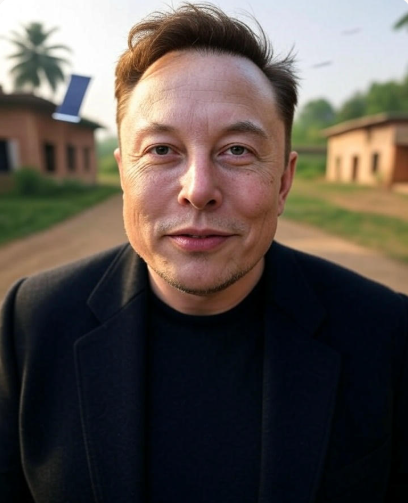Introduction
On May 25, 2025, MSN published an article titled “Elon Musk’s Starlink India launch: Price, benefits of satellite internet and all you need to know,” highlighting the anticipated launch of Starlink’s satellite internet service in India. Spearheaded by Elon Musk’s SpaceX, Starlink promises to deliver high-speed internet to even the most remote corners of the country, addressing a long-standing global concern often seen in Google’s “People Also Asked” section: how can rural and underserved regions access reliable internet? Despite regulatory approvals, challenges like high costs, technical limitations, and competition in India’s telecom market remain. This blog explores these issues and proposes solutions to ensure Starlink’s success in India, transforming connectivity for millions as of May 26, 2025.
The Problem: Challenges Facing Starlink’s Launch in India
Starlink’s entry into India, while promising, faces significant hurdles that could impact its ability to deliver on its goal of bridging the digital divide.
- High Costs in a Price-Sensitive Market
Starlink’s pricing structure poses a major challenge in India, a market known for its affordability-driven telecom services. While official prices are yet to be confirmed, reports suggest promotional unlimited data plans might start at under Rs 840 per month, with hardware kits costing between Rs 21,300 and Rs 32,400. In comparison, Indian fiber broadband plans offer speeds up to 1 Gbps for as low as Rs 500 per month, often with minimal hardware costs and bundled OTT apps. Posts on X reflect public skepticism, with users estimating monthly fees as high as Rs 3,000 to Rs 7,000—far above local alternatives. This price disparity could deter adoption, especially in rural areas where affordability is key, a concern frequently raised in global discussions about satellite internet accessibility.
- Technical Constraints Limiting Scalability
Starlink’s satellite capacity presents technical challenges for scaling in India. With 7,000 satellites currently supporting 4 million global subscribers, estimates suggest that even an expanded fleet of 18,000 satellites could serve only 1.5 million users in India by 2030. India’s geographical share of global satellite coverage is just 0.7% to 0.8%, meaning only 700–800 satellites would cover the country at any time, compared to over 800,000 telecom towers and 3 million base stations already in place. This limitation could lead to congestion and reduced service quality, particularly in densely populated regions, a challenge often highlighted in online searches about Starlink’s feasibility in large markets.
- Regulatory and Competitive Pressures
Despite receiving a Letter of Intent from the Department of Telecommunications, Starlink awaits final clearance from India’s space regulator, IN-SPACe, as of May 2025. Competitors like Bharti Airtel-backed Eutelsat OneWeb and Reliance Jio’s partnership with SES have already secured approvals, intensifying competition in India’s telecom market, where Airtel and Jio control 80% of the sector. The decision to allocate satellite spectrum administratively rather than through auctions—a move Musk supported—has sparked debates, with industry leaders like Mukesh Ambani advocating for auctions to favor established players. This regulatory uncertainty, coupled with competitive pressures, could delay Starlink’s rollout, a concern often raised in global queries about satellite internet deployment.
- Public Perception and Awareness Gaps
Public perception in India poses another challenge. While Starlink’s global reputation is strong, with 6,419 satellites serving over 100 countries, many Indians are unfamiliar with its benefits or wary of its costs. Partnerships with Airtel and Jio aim to leverage their retail networks for distribution, but awareness remains low, especially in rural areas where Starlink’s impact could be greatest. Misconceptions about satellite internet, such as fears of unreliable service or high latency, also persist, despite Starlink’s low Earth orbit satellites offering latency as low as 20 milliseconds. Addressing these gaps is critical to gaining public trust, a topic frequently discussed in online forums about new tech adoption in India.

The Solution: Ensuring Starlink’s Success in India
To overcome these challenges and revolutionize connectivity in India, Starlink must adopt strategic measures that address cost, scalability, regulation, and public perception.
- Introducing Tiered Pricing and Subsidies
To tackle affordability, Starlink should introduce tiered pricing plans tailored to India’s diverse economic landscape. A basic plan for rural users could start at Rs 500 per month, aligning with local broadband rates, while premium plans for urban or business users could range from Rs 1,500 to Rs 3,000 with higher speeds and priority data. To offset the high hardware costs (Rs 21,300–Rs 32,400), Starlink could offer installment plans or partner with the Indian government to provide subsidies for rural households, schools, and healthcare facilities. For example, the government’s Digital India initiative could fund Starlink kits for underserved regions, ensuring accessibility while addressing global concerns about equitable internet access.
- Expanding Satellite Capacity and Infrastructure
To address technical constraints, Starlink should accelerate its satellite deployment, aiming to increase its fleet beyond the projected 18,000 by 2030. Collaborating with Indian telecom giants like Airtel and Jio to integrate Starlink’s satellite coverage with their existing terrestrial infrastructure could also enhance scalability. For instance, Jio’s 3 million base stations could serve as ground stations to relay Starlink signals, reducing congestion and improving service quality in densely populated areas. Additionally, investing in localized data centers could lower latency further, making Starlink competitive with fiber broadband and answering global questions about satellite internet reliability in large markets like India.
- Navigating Regulatory Challenges Through Collaboration
To expedite regulatory approvals, Starlink should deepen its partnerships with Airtel and Jio, leveraging their established relationships with Indian authorities. These telecom giants can advocate for Starlink’s compliance with IN-SPACe requirements, ensuring a smoother rollout. Starlink should also align with India’s security guidelines, such as content censorship and traffic interception, to address government concerns about national sovereignty. By demonstrating a commitment to local regulations, Starlink can avoid delays and counter competitive pressures, addressing global concerns about navigating regulatory hurdles in emerging markets.
- Launching Public Awareness Campaigns
To bridge awareness gaps and build trust, Starlink should launch targeted public awareness campaigns in collaboration with Airtel and Jio. These campaigns could include rural outreach programs, demonstrating Starlink’s user-friendly setup requiring only a satellite dish, Wi-Fi router, and power supply and its benefits, such as download speeds of 25 to 220 Mbps and low latency for video calls and gaming. Airtel’s retail stores and Jio’s online platforms can host demo centers where users experience Starlink’s capabilities firsthand. Additionally, educational initiatives highlighting Starlink’s role in connecting schools and healthcare facilities can shift public perception, addressing global curiosity about satellite internet’s practical impact.
- Focusing on Rural Empowerment and Digital Inclusion
Starlink’s greatest potential in India lies in empowering rural communities. By prioritizing connectivity for schools, healthcare facilities, and small businesses, Starlink can bridge the digital divide, enabling access to online education, telemedicine, and e-commerce. For example, rural students could access digital learning platforms, while small enterprises could reach new markets online. Starlink should partner with NGOs and government programs like Digital India to identify priority areas, ensuring that its services directly address the needs of underserved regions. This focus on digital inclusion answers global questions about how satellite internet can transform rural connectivity.
Future Outlook
Implementing these solutions faces hurdles. Tiered pricing and subsidies require significant investment, and expanding satellite capacity depends on SpaceX’s global deployment timeline. Regulatory collaboration must navigate India’s complex bureaucracy, and public awareness campaigns need sustained effort to overcome skepticism. However, as Starlink prepares to launch in India, these strategies can position it as a game-changer in the telecom market. Analysts predict that India’s satellite internet market could grow to $25 billion, with Starlink potentially adding 1 million subscribers annually in Asia. By addressing these challenges, Starlink can fulfill its promise of connecting India’s 1.4 billion people, even in the most remote regions.
Insights
The MSN article on May 25, 2025, underscores the global anticipation for Starlink’s launch in India, a move that could revolutionize internet access for millions. While challenges like high costs, technical limitations, regulatory hurdles, and public perception persist, solutions such as tiered pricing, infrastructure expansion, regulatory collaboration, awareness campaigns, and a focus on rural empowerment can ensure Starlink’s success. As of May 26, 2025, Starlink stands at the cusp of transforming India’s digital landscape, offering a blueprint for how satellite internet can bridge the global digital divide one connection at a time.



